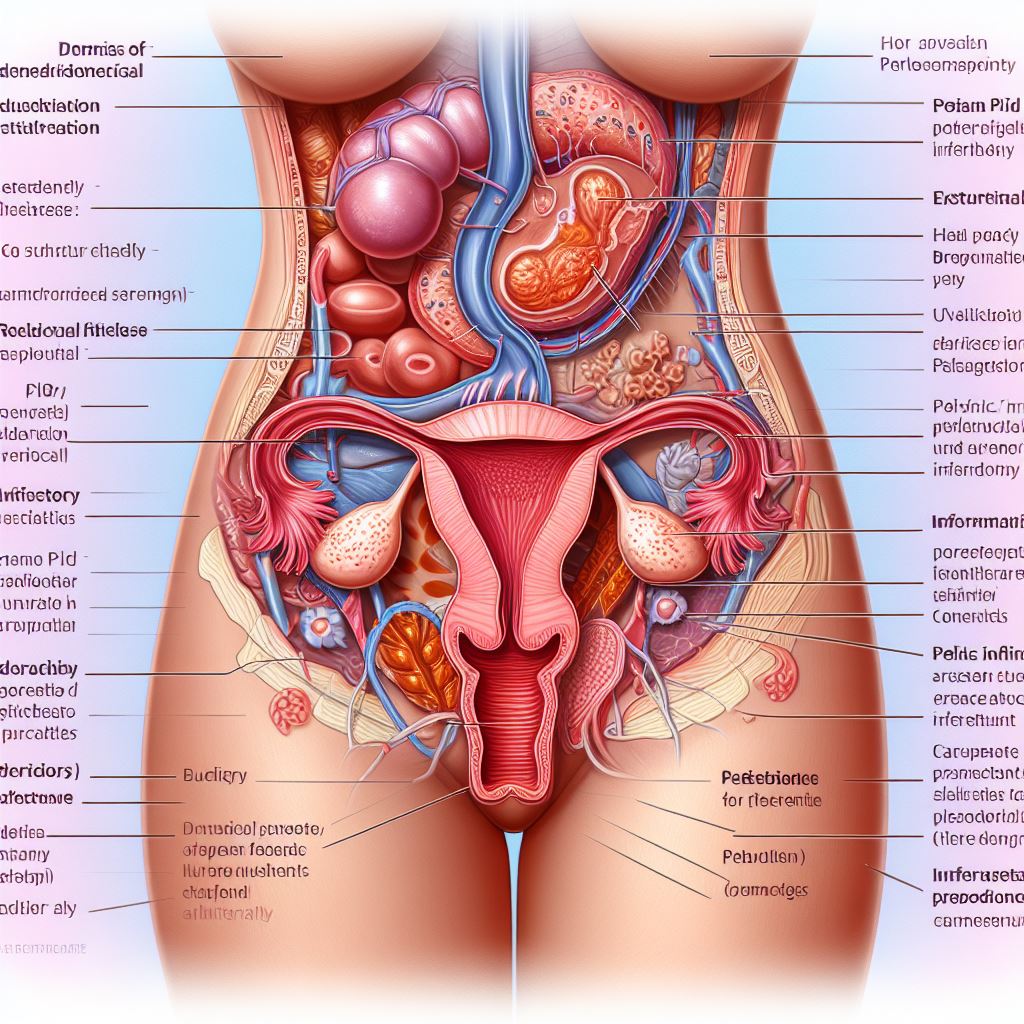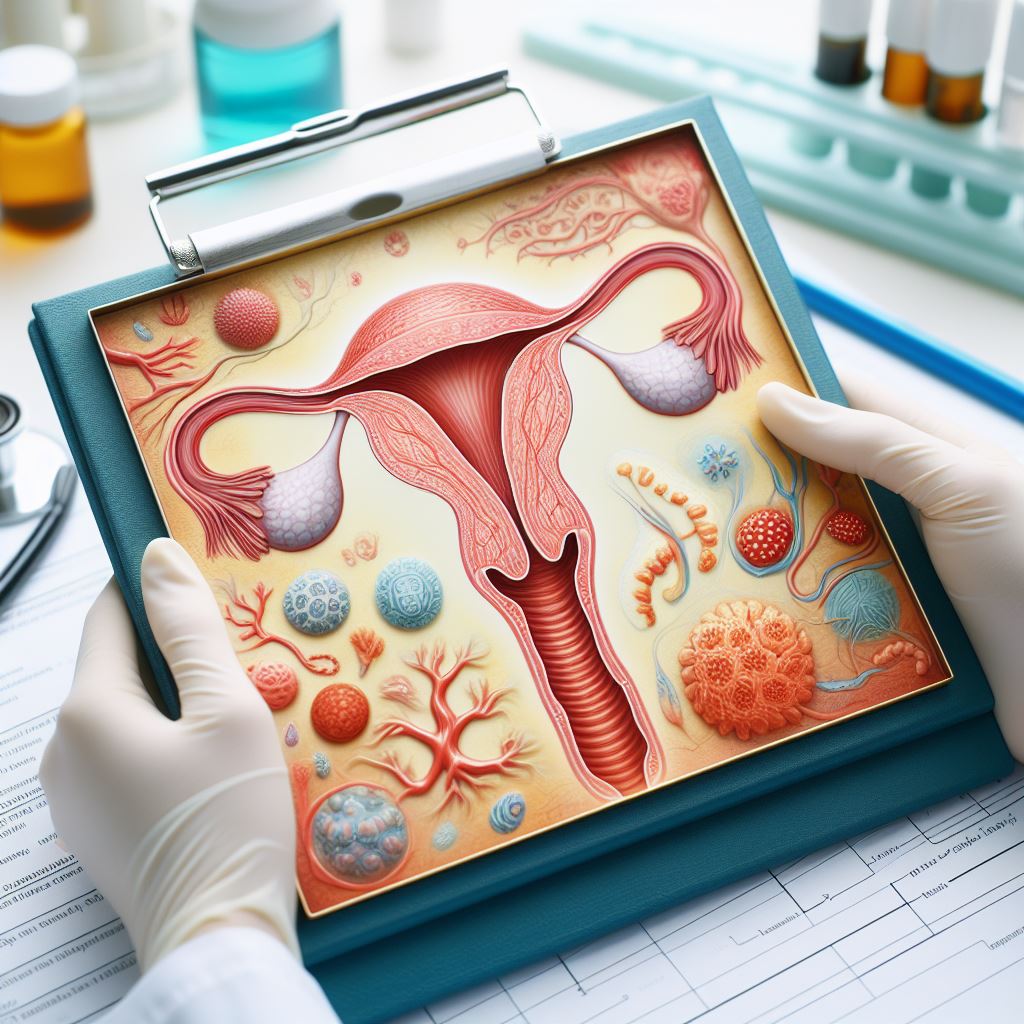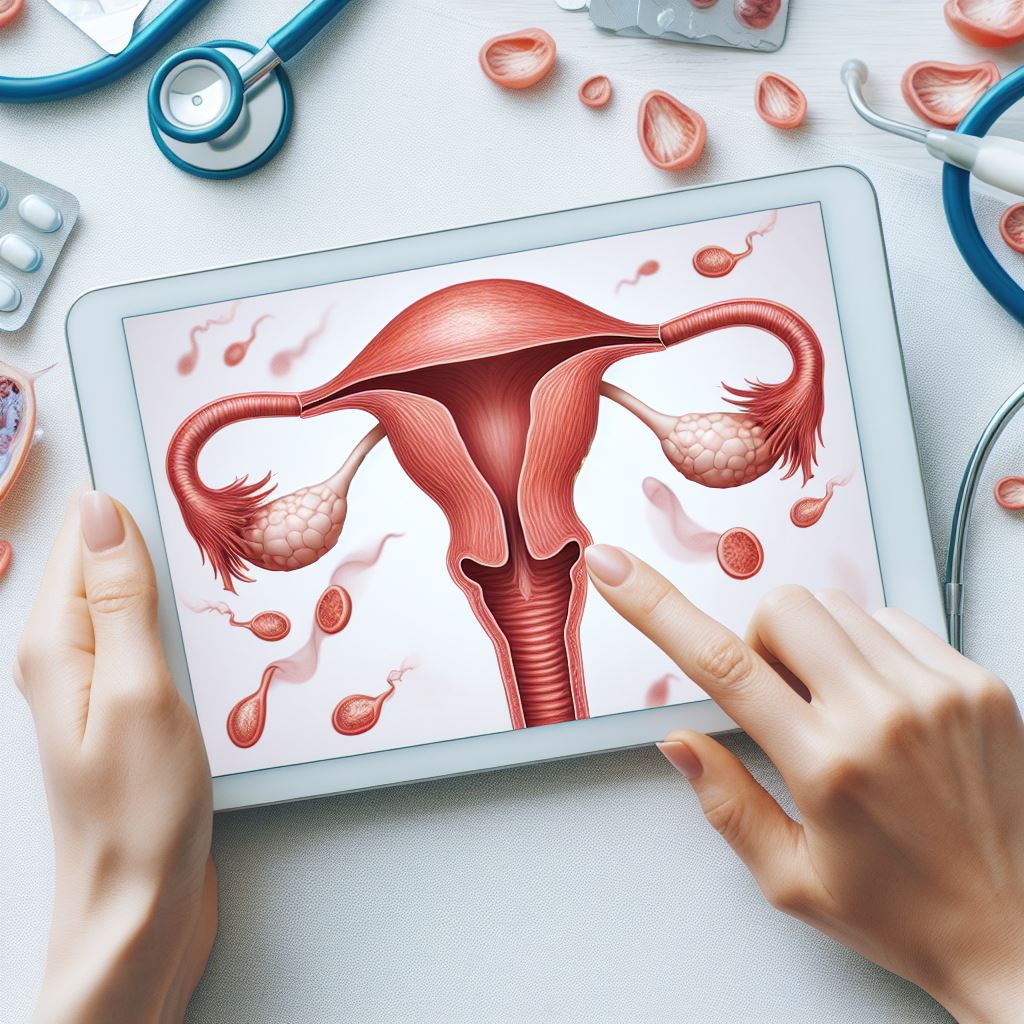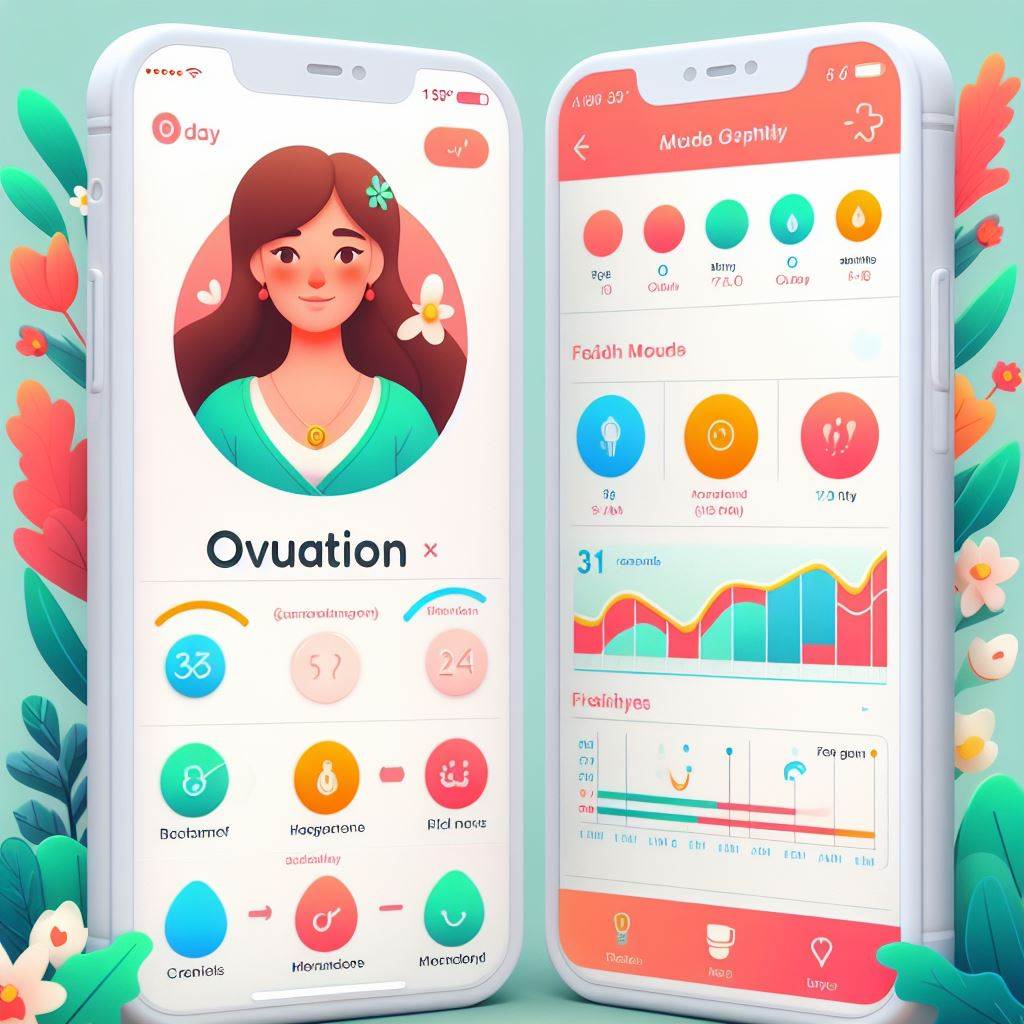Introduction
If you are a woman who is trying to get pregnant, you may have heard of pelvic inflammatory disease (PID). PID is a common infection that can damage your reproductive organs and make it harder for you to conceive. In fact, PID is the most common preventable cause of infertility in the United States1.
But what exactly is PID, and how does it affect your fertility? How can you prevent it, and what are the treatment options if you have it? In this blog post, we will answer these questions and more, so you can be informed and empowered about your reproductive health.
What is PID and how does it affect your fertility?
PID is an infection that occurs when bacteria from the vagina or cervix travel up to the uterus, fallopian tubes, and/or ovaries. The bacteria can cause inflammation, scarring, and blockage of the reproductive organs, which can interfere with the normal function of the eggs and sperm.
PID can affect your fertility in several ways:
- It can reduce the number of eggs you have in your ovaries, or damage the quality of the eggs.
- It can cause scar tissue or adhesions to form in your fallopian tubes, which can prevent the eggs from reaching the uterus, or the sperm from reaching the eggs.
- It can increase the risk of ectopic pregnancy, which is when the fertilized egg implants outside the uterus, usually in the fallopian tube. Ectopic pregnancies are dangerous and can be life-threatening.
- It can cause chronic pelvic pain, which can affect your sexual function and quality of life.
According to the Centers for Disease Control and Prevention (CDC), about one in 10 women with PID become infertile2. However, the risk of infertility depends on several factors, such as:
- The severity and duration of the infection
- The number of times you have had PID
- The type of bacteria that caused the infection
- The presence of other medical conditions, such as endometriosis or polycystic ovary syndrome (PCOS)
- The age at which you have PID
The good news is that PID can be treated, and the sooner you get treatment, the better your chances of preserving your fertility. Therefore, it is important to recognize the signs and symptoms of PID, and seek medical attention as soon as possible.
What are the signs and symptoms of PID?
PID can have different signs and symptoms, depending on the stage and severity of the infection. Some women may not have any symptoms at all, or they may be mild and easy to overlook. However, some common signs and symptoms of PID include:
- Lower abdominal pain or pelvic pain
- Abnormal vaginal discharge, which may be yellow, green, or foul-smelling
- Irregular menstrual bleeding, such as spotting, heavy periods, or bleeding between periods
- Pain during sex or urination
- Fever, chills, or nausea
If you have any of these signs and symptoms, especially if you are sexually active and not using condoms, you should see your doctor right away. PID can be diagnosed by a physical exam, a pelvic exam, and some tests, such as:
- A urine test, to check for bacteria or signs of infection
- A swab test, to take a sample of your vaginal discharge or cervical mucus, and test it for bacteria or sexually transmitted infections (STIs)
- A blood test, to check for signs of inflammation or infection
- An ultrasound, to look at your reproductive organs and check for any abnormalities, such as fluid, abscesses, or scarring
- A laparoscopy, which is a minor surgery that involves inserting a thin tube with a camera through a small incision in your abdomen, and looking at your pelvic organs directly
What causes PID and how can you prevent it?
The most common cause of PID is an STI, such as chlamydia or gonorrhea. These are bacterial infections that can be passed from one person to another through sexual contact, such as vaginal, anal, or oral sex. Chlamydia and gonorrhea are very common, especially among young people, and they often do not cause any symptoms. Therefore, many people may not know they have them, and they may unknowingly spread them to their partners.
Other causes of PID include:
- Douching, which is washing or rinsing the inside of your vagina with water or other fluids. Douching can change the normal balance of bacteria in your vagina, and make it easier for harmful bacteria to grow and move up to your reproductive organs.
- Having an intrauterine device (IUD), which is a small, T-shaped device that is inserted into your uterus to prevent pregnancy. IUDs are very effective and safe, but they may increase the risk of PID in the first few weeks after insertion, especially if you have an STI or a history of PID.
- Having a recent abortion, miscarriage, or childbirth, which can expose your reproductive organs to bacteria or cause tissue damage.
The best way to prevent PID is to protect yourself from STIs. You can do this by:
- Using condoms every time you have sex, unless you are in a monogamous relationship with a partner who has been tested and is free of STIs.
- Getting tested for STIs regularly, and asking your partner to do the same. The CDC recommends that sexually active women under 25 years old, and older women with risk factors, such as multiple partners or a new partner, get tested for chlamydia and gonorrhea every year3.
- Getting treated for STIs as soon as possible, and following your doctor’s instructions. If you have an STI, you should also inform your partner(s), and make sure they get tested and treated as well.
- Avoiding douching, and keeping your vagina clean and healthy by washing it with water and mild soap, and wearing cotton underwear.
- Choosing a birth control method that suits your needs and preferences, and discussing the pros and cons of each option with your doctor. If you have an IUD, you should check the strings regularly, and see your doctor if you have any pain, bleeding, or signs of infection.
- Seeking medical care if you have any signs or symptoms of PID, or if you have had a recent abortion, miscarriage, or childbirth.
What are the treatment options for PID and how can they help your fertility?
PID can be treated with antibiotics, which can kill the bacteria that cause the infection and reduce the inflammation. The type and duration of antibiotics depend on the cause and severity of your PID, and your doctor will prescribe the best option for you. You should take the antibiotics exactly as directed, and finish the whole course, even if you feel better. You should also avoid having sex until you and your partner(s) have completed the treatment, and your doctor has confirmed that the infection is gone.
Antibiotics can cure the infection, but they cannot reverse the damage that has already been done to your reproductive organs. Therefore, it is important to get treatment as soon as possible, before the infection causes more complications. If you have severe PID, or if the antibiotics do not work, you may need surgery to remove the infected tissue, drain any abscesses, or repair any scarring. Surgery can improve your symptoms and your fertility, but it may also have some risks and side effects, such as bleeding, infection, or damage to nearby organs. Your doctor will discuss the benefits and risks of surgery with you, and help you decide if it is the best option for you.
If you have PID and want to get pregnant, you should talk to your doctor about your fertility status and your options. Your doctor may recommend some tests, such as a hysterosalpingogram (HSG), which is an X-ray that shows the shape and condition of your uterus and fallopian tubes, or a laparoscopy, which can give a more detailed view of your pelvic organs. These tests can help determine if you have any blockages or scarring that may affect your fertility, and if you need any further treatment.
Depending on your situation, your doctor may suggest some fertility treatments, such as:
- Fertility drugs, which can stimulate your ovaries to produce more eggs, and increase your chances of ovulation and conception.
- Intrauterine insemination (IUI), which is a procedure that involves placing sperm directly into your uterus, to bypass any blockages or scarring in your fallopian tubes.
- In vitro fertilization (IVF), which is a procedure that involves retrieving eggs from your ovaries, fertilizing them with sperm in a lab, and transferring the resulting embryos into your uterus.
Fertility treatments can help you achieve pregnancy, but they may also have some risks and side effects, such as multiple pregnancy, ovarian hyperstimulation syndrome, or ectopic pregnancy. Your doctor will explain the pros and cons of each treatment, and help you choose the best one for you.
Conclusion
PID is a serious infection that can affect your reproductive health and your fertility. However, you can prevent it by protecting yourself from STIs, and getting tested and treated as soon as possible. You can also improve your chances of getting pregnant by seeking medical care and exploring your fertility options. If you have any questions or concerns about PID and fertility, you should talk to your doctor, who can provide you with more information and support.






